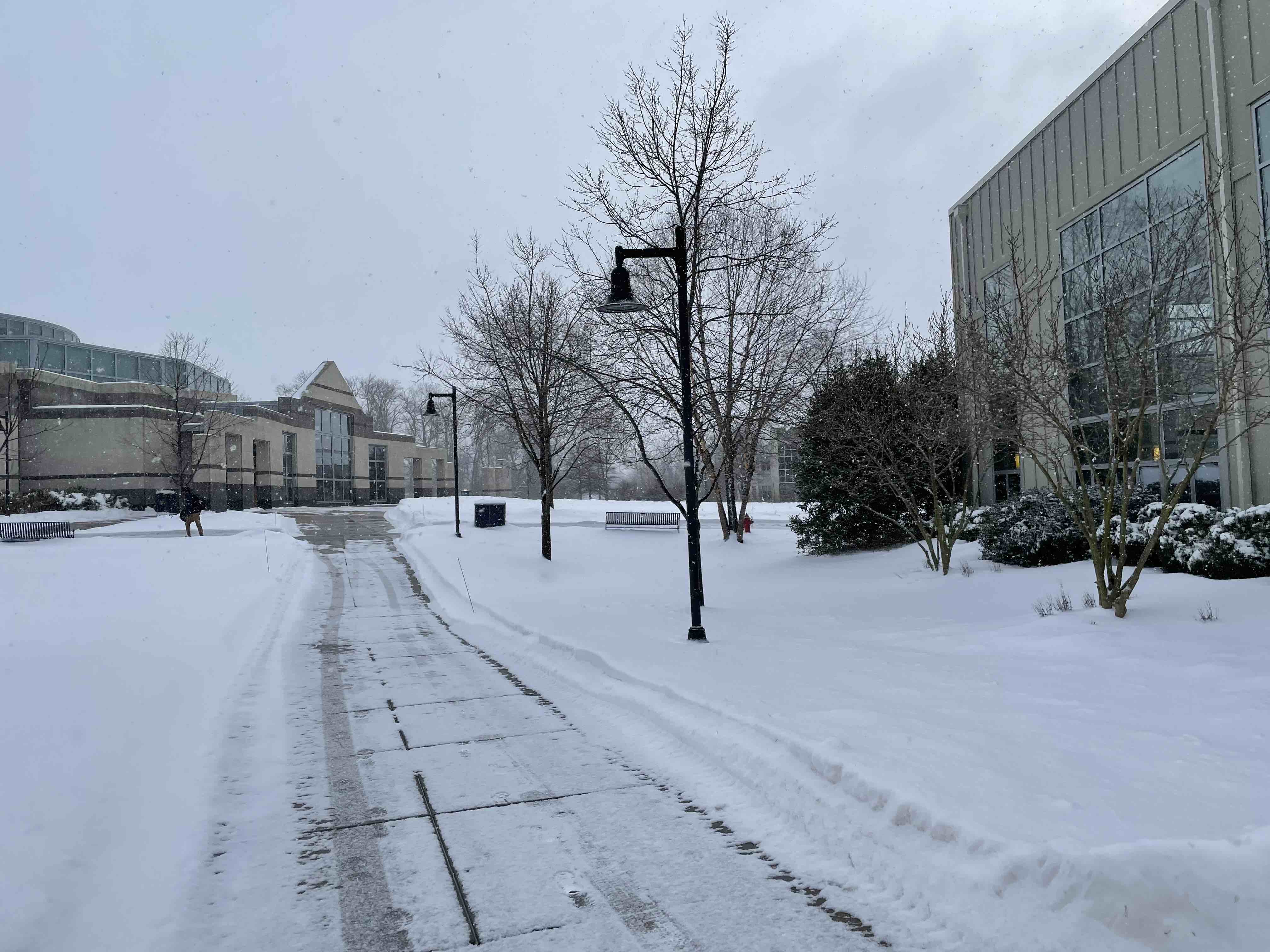Anika Agarwal ‘23
Caroline Sewell ‘23

Photo courtesy of Ashley Kennedy ’22
As a child, the most exciting thing to wake up to is the ground covered in fluffy white snow. Days spent making snowmen, sledding, drinking hot chocolate, and taking a break from school work have been a longstanding tradition in climates where the temperature drops below freezing. However, with the implementation of remote learning, snow days are ceasing to exist, instead replaced with “virtual” snow days. The school seems to think this is good for our education but they are wrong. Virtual snow days are ineffective due to logistical issues like power outages, inconvenient transitions between in-person and online school that cause scheduling issues, and more importantly, the loss of a well-loved multi-generational tradition.
We grew up with snow days, our parents grew up with snow days, and their parents grew up with snow days. They are an essential part of childhood and the school experience. There is nothing quite like the joy of a surprise day off from school. The memories made on days where the sole purpose is just “to have fun” are invaluable. Erica Feehery ‘21 says, “Virtual snow days are a bad idea. I think that kids in the future are going to resent us.” Lower Schoolers, who are already disadvantaged due to the lack of social interaction and time spent outdoors because of the pandemic, need time to be children and play in the snow. This year specifically has been extremely challenging for students, which is why they deserve the break from rigorous academic work when inclement weather does not permit a safe return to campus.
The purpose of snow days is to minimize the amount of accidents caused by bad road conditions that occur in both transportation to and from campus. However, these same conditions can also lead to power outages at home, limiting students’ ability to learn virtually. If the majority of the EA community lost power, classes would not be held. It is possible that power outages would be distributed unequally, affecting some families much more than others, and therefore, some students would be behind in classes. By having a snow day instead, you ensure that all students have the same access to learning. Another solution to this would be offering asynchronous lessons. Lydia Nawrocki ‘23 agrees, saying, “[Power outages] would put people at a disadvantage. I think if there are a lot of outages in the area, it would be smart for either video lessons or something of the sort to send out to kids, it is a lot harder to do live lessons, or just give a normal snow day and hopefully power will come back soon.”
In a non-COVID year where there are no long term online periods, setting up a virtual classroom on the fly would cause more trouble than it’s worth. There are issues with tests and lesson plans as the shift in schedule creates different block lengths, and some tests cannot be taken online. Events like this are just as disruptive as missing a day of school. Upper School Math teacher Thomas Goebeler remarks on the physical impracticality of the short-term transition between in-person and virtual snow days, stating, “I have 17 pounds of notes and 24 pounds of books that I have to carry back and forth everytime we go virtual. It’s absolutely impractical [to transition for such short periods of time]. It’s ridiculous.”
Additionally, children have a hard time focusing online, especially when they could be sledding or playing outside in the snow. Which is more fascinating, the winter wonderland right outside their window or a computer screen? The inability to pay attention during class and consequential missed material might hurt students more than not having class and pushing things back a day.
Emily Staid ‘22 is in agreement, saying, “You can’t isolate yourself [at home] as easily. Also, teachers are dealing with their own kids at home so it’s harder for them to teach. Transitioning from online to offline constantly is hard, especially for kids to not even want to be there, because in previous years they would have off. ”
A possible argument for virtual school would be the 15-minute-passing period in between classes that has led to the loss of three weeks of class time this year. Some classes, such as APs, need every minute of instruction they can get to succeed during AP exams in May. Admittedly, virtual school days can help students and teachers manage their schedules better because tests and lessons do not have to be pushed back as much. Sydney Clemmer ‘23 offers, “If you can have the kids go to school, in theory you should.” However, this issue has already been compensated for by the conversion of Mayterm into part of the academic year, adding an additional three weeks of school to make up for lost work. The loss of class time only applies to this year, with the unique COVID-19 schedule, and will not be an issue for the long term.
Overall, virtual snow days are ineffective because it is difficult to focus, often creates scheduling issues, and bulldozes a universally anticipated and adored tradition. Solutions such as the shortened schedule and asynchronous videos are preferable to a full-day of online school, as it balances the integrity of a traditional snow day with the need to keep instruction going.